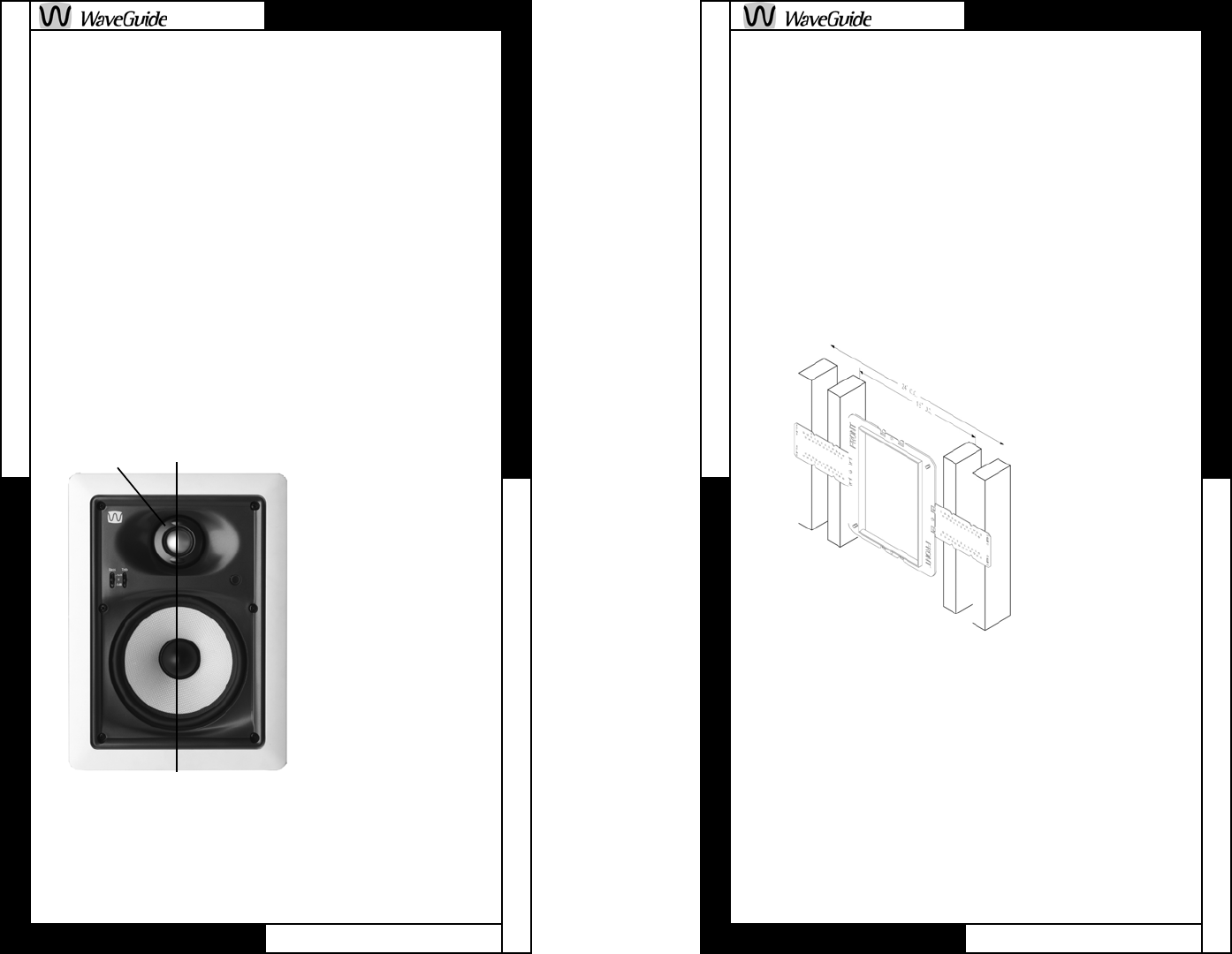
Page 14
touching each other. This can create a short
circuit that can damage your electronics. Mount
the baffle using the 6 screws provided. DO NOT
OVERTIGHTEN THE SCREWS, the screws
should on only be tight enough to secure the
speaker.
Step 6. After the speaker is mounted,
adjustments to the swivel tweeter (small speaker)
can be made by either directing the sound
visually or by using a musical source to
determine the best sound coverage for the
listening area. To position the tweeter, press at
the outside edge of the tweeter housing (DO
NOT PRESS ON THE CONE DIRECTLY).
Note the crease in the asymmetrical tweeter
provides the highest directional response in this
direction. See figure
11.
If you require to
disperse the sound
in a 360-degree
pattern you must
position the line in
the tweeter in a
horizontal position.
See figure 12.
The combination of
switch settings allow
you to boost and cut
bass and treble +/-
3dB. Adjust the
speaker level to
accommodate for
room acoustics. See
figure 13.
Crease position
FIGURE 11
Tweeter horn
TM
In-wall Speakers
Step 1. Speaker mounting rings are used in the
pre-construction phase of speaker installation
during construction of new homes and additions.
WaveGuide mounting rings are designed to
provide drywall installers the correct cut-out
pattern for the speakers. The rings have “flaps”
that are nailed/screwed/stapled onto the studs.
See figure 8.
Once the wall board is installed, the opening is
cut out and the speaker frame is inserted into the
mounting ring.
When installing
the mounting
ring, note that
there are holes
molded into the
mounting ring
for speaker
wire tie-off.
TIPS FOR NEW CONSTRUCTION
• Use a small level to verify that the mounting
ring is straight.
• If possible, run speaker wires after AC
wiring is in place to avoid additional noise
caused by close proximity of wiring.
• Secure the speaker wires against a stud with
insulated staples, being careful not to pierce
the wire insulation. Allow slack for building
material expansion.
Page 11
TM
FIGURE 8
